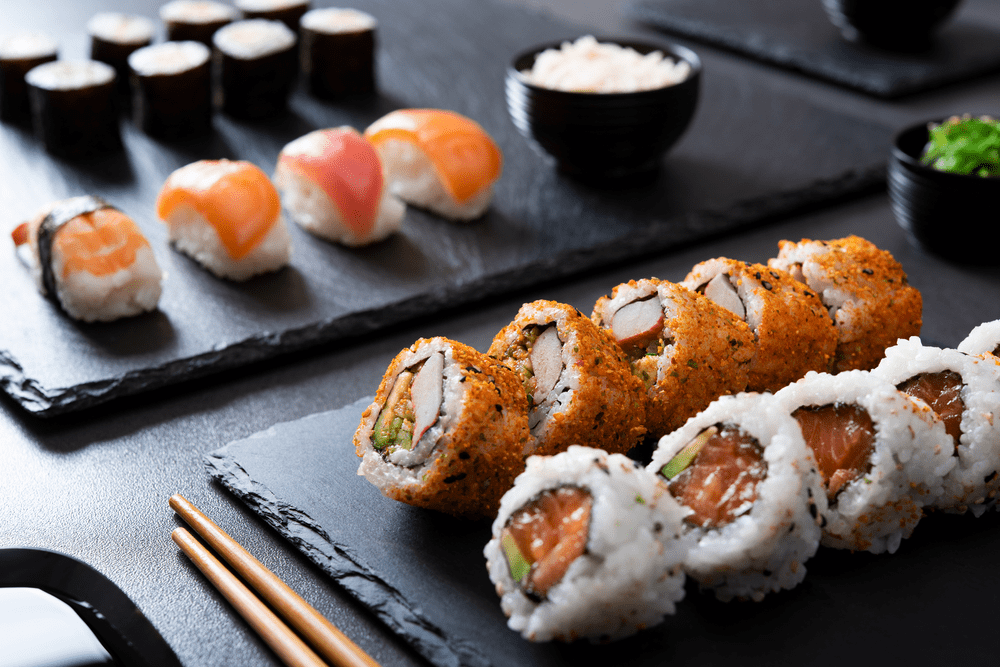Mastering the Art of Pressed Sushi: The Ultimate Pressed Sushi Recipe Guide
Written By James Morgan
When it comes to Japanese cuisine, sushi often takes center stage. Among the many varieties, the **pressed sushi recipe** stands out as a unique and delightful culinary experience. This article will walk you through everything you need to know to make the perfect pressed sushi, right in the comfort of your home. Whether you're a seasoned chef or a newbie in the kitchen, this guide is designed to be comprehensive and user-friendly.

The Magic of Pressed Sushi
Pressed sushi, also known as Oshizushi, originates from the Kansai region of Japan. Unlike traditional sushi, which involves rolling, pressed sushi is made using a wooden mold called an oshiwaku. This method compresses the rice and toppings into a rectangular block, which is then sliced into bite-sized pieces. The texture is different, but equally delightful, offering a compact and flavorful bite that sushi enthusiasts love.

Essential Equipment for Making Pressed Sushi
To create the best **pressed sushi**, you'll need some essential equipment. Here's a list of what you'll need:
- Rice Cooker: A reliable rice cooker helps you achieve the perfect sushi rice consistency.
- Sushi Knife: A sharp sushi knife is essential for cleanly slicing your pressed sushi.
- Cutting Board: A sturdy cutting board provides a stable surface for your sushi preparation.
- Strainer: A strainer is useful for washing the rice.
- Sushi Making Kit: This kit often includes the molds and other tools you'll need for pressed sushi.

Ingredients for Pressed Sushi
Before you start, make sure you have all the ingredients ready. Here's what you'll need:
- 2 cups of sushi rice
- 2 1/2 cups of water
- 1/3 cup of rice vinegar
- 3 tablespoons of sugar
- 1 1/2 teaspoons of salt
- Assorted toppings: salmon, tuna, shrimp, eel, etc.
- Seaweed sheets
- Wasabi and pickled ginger, for serving

Step-by-Step Guide to Making Pressed Sushi
Now that we've gathered our equipment and ingredients, let's dive into the step-by-step process of making pressed sushi.
1. Preparing the Sushi Rice
Start by washing the sushi rice thoroughly using a strainer. Rinse it multiple times until the water runs clear. Once washed, transfer the rice to your rice cooker and add the water. Cook according to the rice cooker's instructions.
While the rice is cooking, combine the rice vinegar, sugar, and salt in a small saucepan. Heat over low heat, stirring until the sugar and salt dissolve. Remove from heat and let it cool to room temperature.
2. Mixing the Rice Seasoning
Once the rice is cooked, transfer it to a large mixing bowl. Gradually pour the vinegar mixture over the rice, gently folding it in with a wooden spatula. Be careful not to mash the rice. Let the seasoned rice cool to room temperature.
3. Preparing the Toppings
While the rice is cooling, prepare your toppings. If you're using raw fish, ensure it is sushi-grade and sliced thinly. For cooked toppings like shrimp or eel, cook them accordingly and let them cool. Slice toppings into bite-sized pieces for easy placement in the mold.
4. Assembling the Pressed Sushi
Place a layer of plastic wrap inside your oshiwaku mold, ensuring it covers the bottom and sides. Arrange your chosen toppings neatly on the plastic wrap. Spread a thin layer of the seasoned rice over the toppings, pressing gently to ensure it's compact. Repeat this process, alternating layers of toppings and rice, until the mold is filled. Press the rice firmly with the top part of the mold.
5. Unmolding and Slicing
Carefully remove the pressed sushi block from the mold by lifting the plastic wrap. Place it on a cutting board and use a sushi knife to slice it into bite-sized pieces. Dip the knife in water between slices to prevent sticking.
Serving and Enjoying Your Pressed Sushi
Arrange the pressed sushi pieces neatly on a serving platter. Garnish with wasabi and pickled ginger on the side. Pair it with soy sauce for dipping. Your beautifully crafted pressed sushi is now ready to be enjoyed!
Cleaning and Maintaining Your Equipment
After enjoying your meal, it's important to clean and maintain your equipment properly. Use a gentle cookware cleaner to clean your oshiwaku mold, knife, and other tools. For the cutting board, apply cutting board oil to keep it in good condition.
As an Amazon Associate, I earn from qualifying purchases.
For more culinary inspiration, check out this [sushi rice recipe](https://natashaskitchen.com/sushi-rice-and-california-rolls-recipe/) (external link) on Natasha's Kitchen. For those interested in grilling, don't miss our posts on [How to Cook on Cast Iron Griddle](https://www.grilling4all.com/blogs/recipes/how-to-cook-on-cast-iron-griddle) and [Chicken Thighs in Dutch Oven](https://www.grilling4all.com/blogs/recipes/boneless-skinless-chicken-thighs-in-dutch-oven-recipe).



